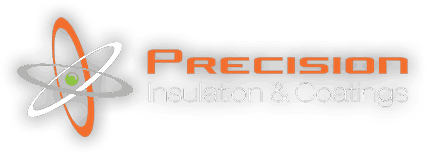When it comes to insulating your home, the choices can feel overwhelming – spray foam, faced vs. unfaced insulation, and so much more. At Precision Insulation & Coatings, we aim to provide homeowners with expert guidance, ensuring the right insulation solution is selected for every project. In this blog, we’ll break down the differences between faced and unfaced insulation and help you decide which is best for your needs.
If you’re searching for insulation companies near me or insulation contractors near me, Precision Insulation & Coatings is your trusted partner for professional service and expert advice.
What is Faced Insulation?
Faced insulation comes with a layer of material—often kraft paper or foil—affixed to one side. This facing acts as a barrier, providing additional benefits beyond thermal insulation, such as:
Moisture Control: The facing material helps manage moisture levels, making it ideal for areas like basements or attics prone to humidity.
Ease of Installation: The facing material makes the insulation easier to attach to wall studs, ceiling joists, or floor beams.
Code Compliance: Many building codes require faced insulation in specific applications due to its vapor barrier properties.
Faced insulation is commonly used in new construction projects or areas where moisture resistance is a priority. It is a great choice for maintaining energy efficiency while protecting against water damage.
What is Unfaced Insulation?
Unfaced insulation lacks the moisture barrier layer, but it still delivers excellent thermal and acoustic performance. It is typically made of fiberglass, mineral wool, or other insulating materials. Key benefits include:
Flexibility: Unfaced insulation can be layered over existing insulation to boost R-value (a measure of thermal resistance).
Fire Resistance: Since it lacks the facing material, unfaced insulation is often more fire-resistant, making it a safer option for certain applications.
Cost-Effective: Without the additional material, unfaced insulation is often less expensive than faced options.
Unfaced insulation is ideal for spaces where moisture control is unnecessary, such as interior walls or areas already equipped with a vapor barrier.
When to Choose Spray Foam Insulation
If you’re debating whether faced or unfaced insulation suits your needs, consider whether spray foam insulation might be the better choice. Spray foam insulation offers unmatched benefits, including:
Superior Air Sealing: Spray foam fills even the tiniest cracks and gaps, providing an airtight barrier.
Moisture Resistance: Spray foam naturally resists moisture, eliminating the need for a separate vapor barrier.
Energy Efficiency: While the upfront spray foam insulation cost may be higher, the long-term savings on energy bills make it a worthwhile investment.
Durability: Spray foam doesn’t degrade over time, ensuring consistent performance for decades.
Precision Insulation & Coatings specializes in insulation spray foam, which can be applied in hard-to-reach areas like crawl spaces and irregularly shaped surfaces. Whether you need spray foam insulation for your attic or exterior walls, our expert team is here to help.
Faced vs. Unfaced Insulation: Which is Right for You?
Choosing the right insulation depends on factors such as your home’s location, the specific area being insulated, and your long-term energy goals. Here’s a quick guide:
Use Faced Insulation: For areas prone to moisture, like basements and exterior walls.
Use Unfaced Insulation: For interior walls where you need soundproofing or when layering over existing insulation.
Use Spray Foam Insulation: For ultimate energy efficiency, air sealing, and durability.
Why Choose Precision Insulation & Coatings?
At Precision Insulation & Coatings, we’re committed to helping you make informed decisions about your insulation needs. Whether you’re searching for insulation companies near me or wondering about spray foam insulation cost, our experienced team is ready to deliver top-notch service. We provide custom insulation solutions that prioritize energy efficiency, comfort, and value.
